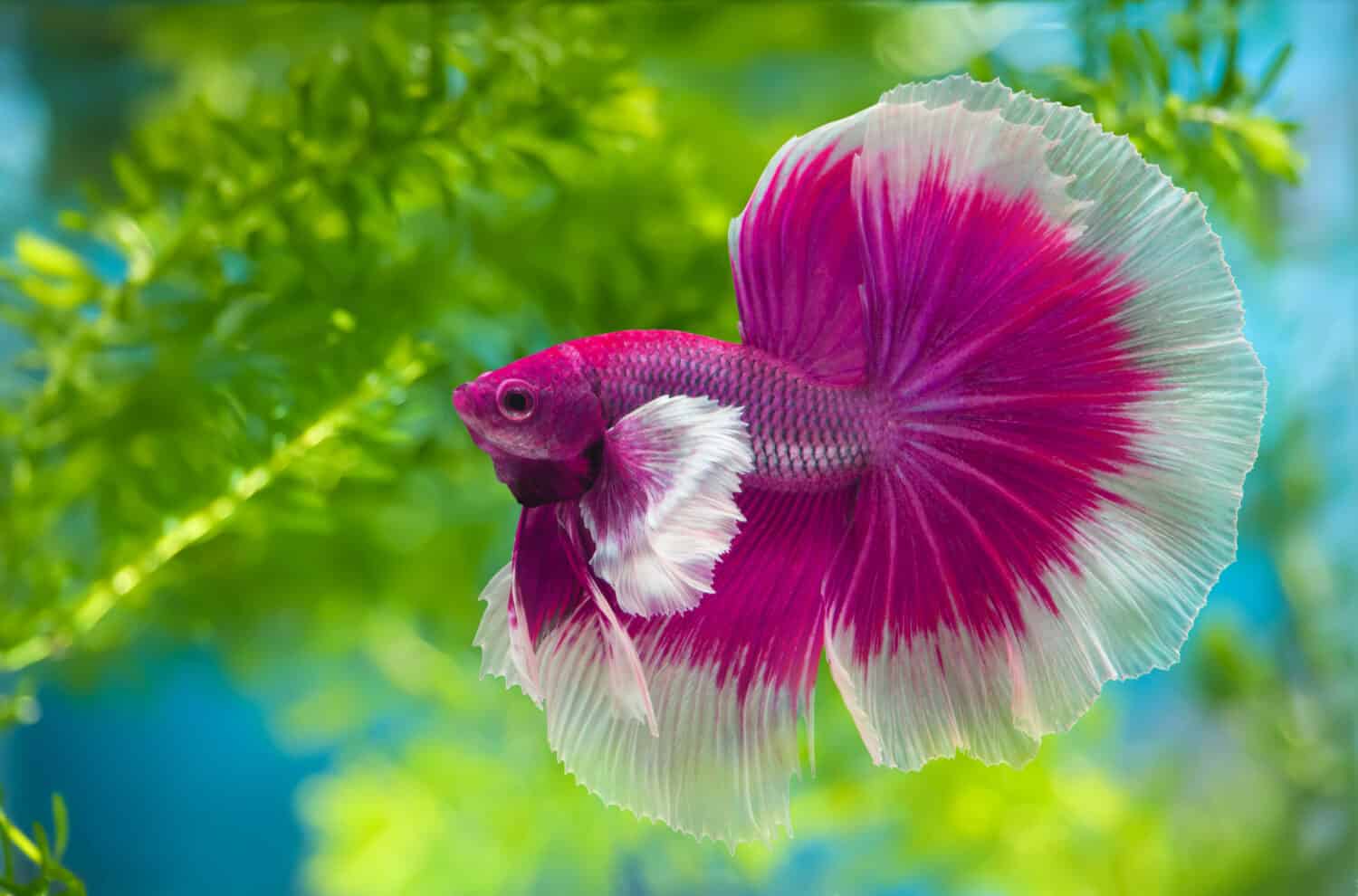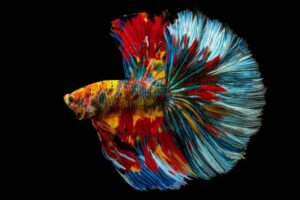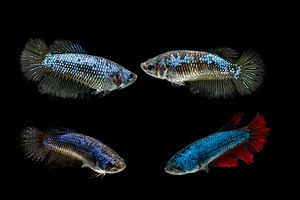Could you spot a betta fish in the wild? Not if you’re looking for a bright colorful fish. In the wild, most bettas have neutral colors, like plain green, brown, or gray. These colors help them blend into the slow-moving streams and rice fields in Southeast Asia.
So where do the famous red or glamorous gold varieties come from? Vibrantly colored bettas are the result of meticulous breeding methods. As are the rarest and most unique betta fish colors.
Follow along as we dive deep into some of the different color varieties out there. And who knows? You might just come across a betta fish color you didn’t know existed! Keep reading to find out.
Overview of Betta Fish Colors
There are more than 70 kinds of betta fish. Whether you’re looking for a metallic-looking betta fish or a mellow yellow beauty, there’s a color choice out there.
Here are some of the rarest and most unique betta fish colors:
- Red
- Red, white, and blue stripes
- Teal and dark blue
- Copper pink halfmoon
- All white
- Koi
- Chocolate and white
- Gold
- Black
- Light green
- Rose petal
- Pineapple
- Yellow
- Marble
- Metallic
- Purple
- Rose gold
- Orange Dalmatian
- Translucent/clear
- Albino
Culturally, betta fish have been a long-time symbol of beauty, grace, and even good luck. These long-finned fish come in many colors because people have carefully chosen which ones to breed together.
If you’re breeding bettas, red males are a smart buy. It turns out red male bettas are one of the best choices–the females can’t keep their fins off them. Females often choose red coloration because it’s a sign of good health. The red color can signal to them that the male has good genes and a robust immune system.
The Top 20 Rarest Betta Fish Colors
1. Red
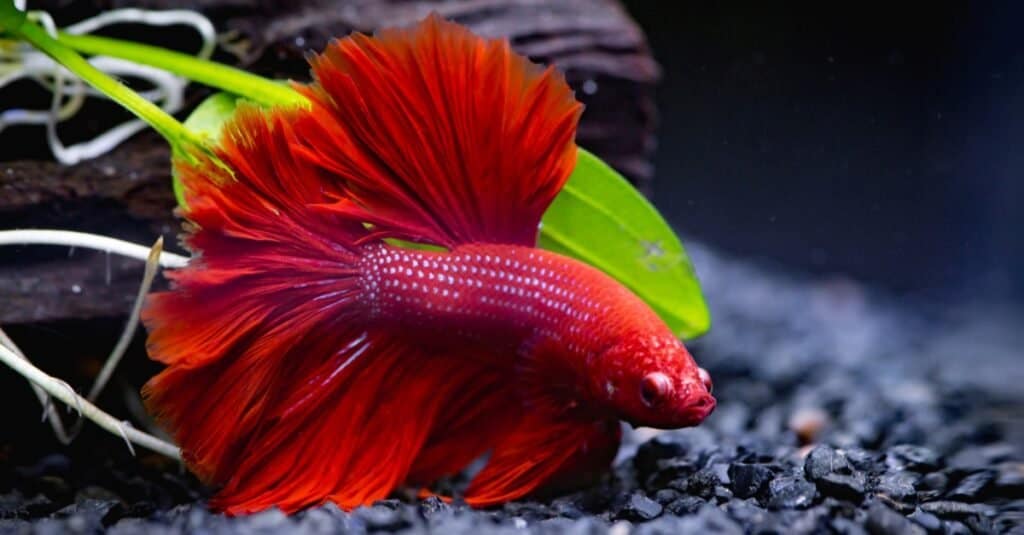
Females tend to love red betta fish, the coloration can signify good overall health.
©ANURAK PONGPATIMET/Shutterstock.com
2. Red, White, and Blue Stripes

Red, white, and blue bettas are the perfect blend of bold colors mixed with white.
©MR.AUKID PHUMSIRICHAT/Shutterstock.com
3. Teal and Dark Blue
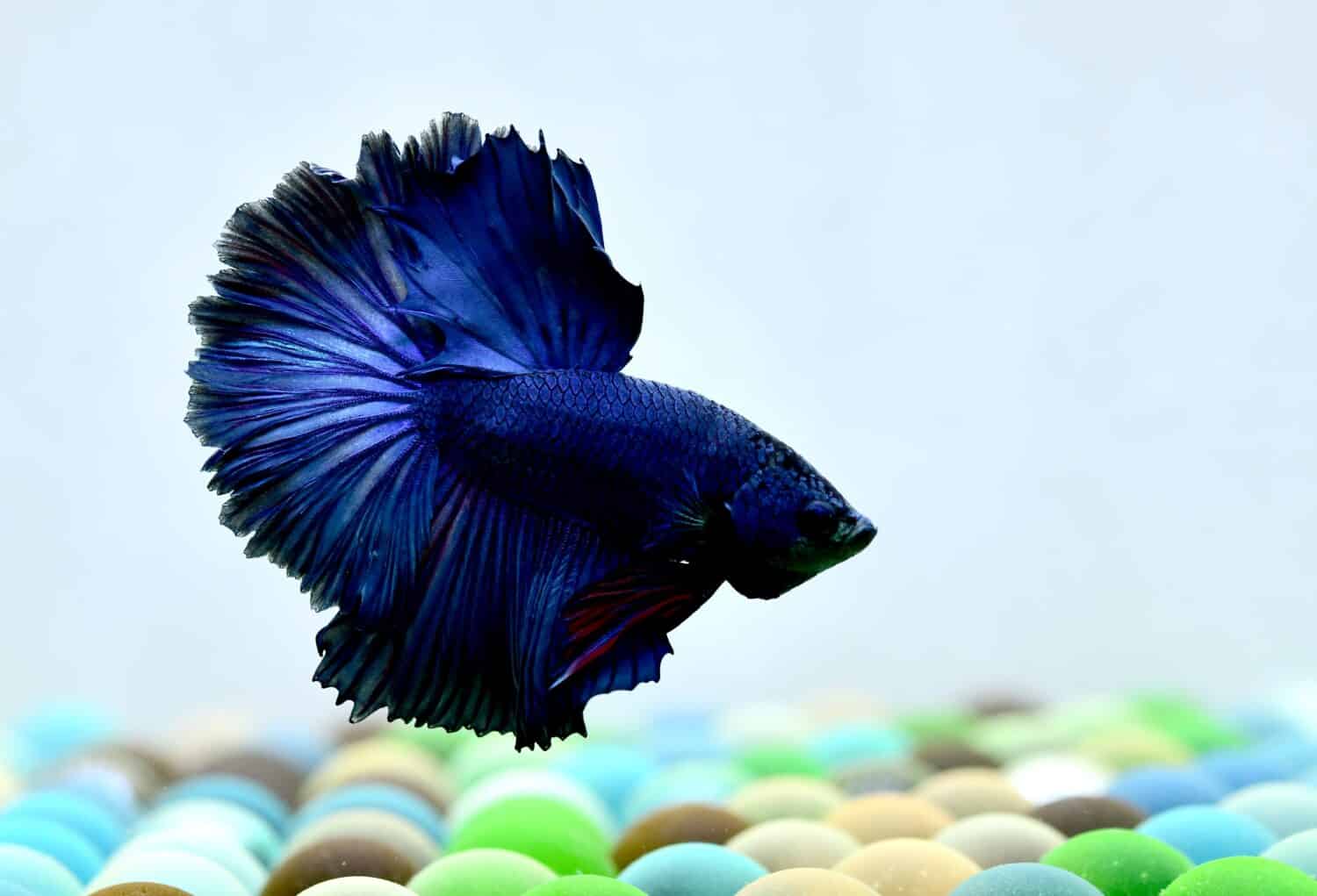
Blue-finned males are one of the more aggressive betta fish varieties.
©bobbyphotos/Shutterstock.com
4. Copper Pink Halfmoon

Rose-petal bettas are one of the rarest color varieties out there.
©Christianus Mangiwa/Shutterstock.com
5. All White

White betta fish are another rare and mesmerizing long-finned beauty.
©SritanaN/Shutterstock.com
6. Koi

Sometimes referred to as galactic koi bettas, this variation offers a blend of orange, red, and dark blues.
©Matt Albanus/Shutterstock.com
7. Chocolate and White
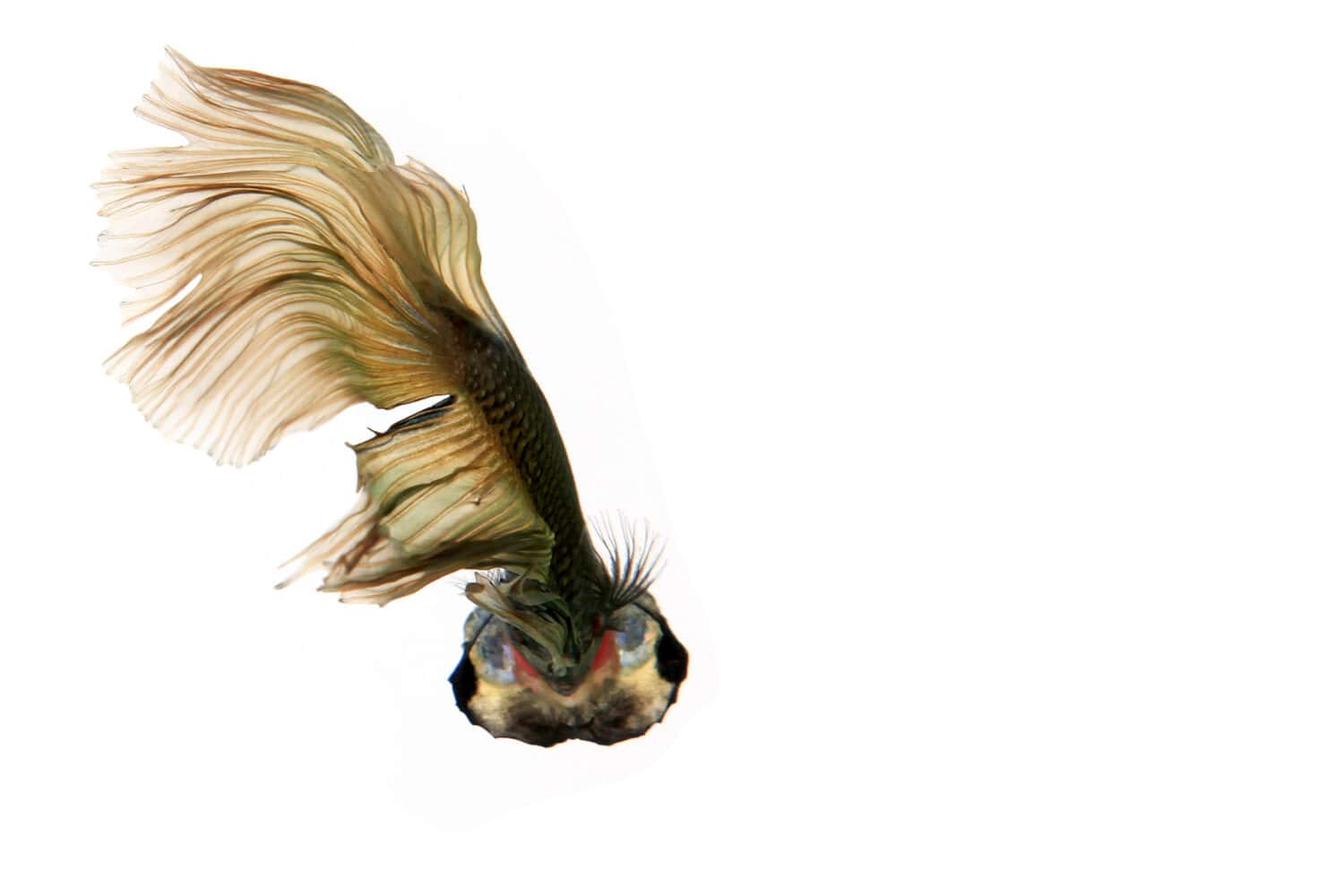
The brown and white bettas are reminiscent of more neutral-colored varieties out in the wild.
©koifish/Shutterstock.com
8. Gold

The betta’s gold color usually deepens as they age.
©Christianus Mangiwa/Shutterstock.com
9. Black

In the wild, a betta’s black colors are usually covered up by other colors.
©Rumaisha Project/Shutterstock.com
10. Light Green
Light green bettas are the result of a recessive gene, they’re one of the most unique variations around. Recessive genes are the ones that can be completely masked by dominant ones.
11. Rose Petal

Rose petal and purple are a couple of the most highly sought-after betta fish colors.
©Hadrani Hasan/Shutterstock.com
12. Pineapple

Bettas with the pineapple coloration usually have a black etching pattern.
©KSeventeen/Shutterstock.com
13. Yellow
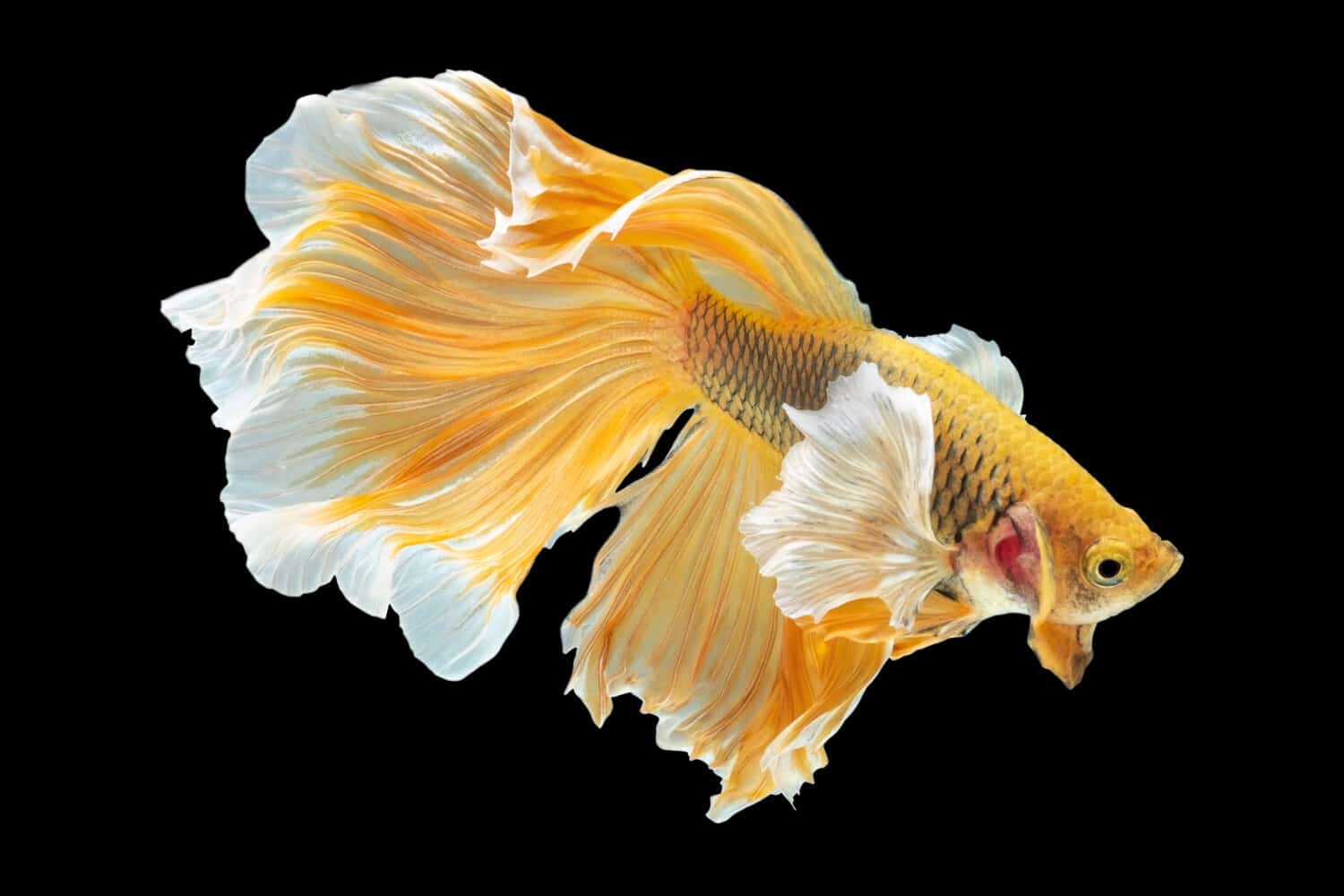
Yellow bettas are a more solid bold color that sometimes looks almost orange.
©Tu.Kulaya/Shutterstock.com
14. Marble
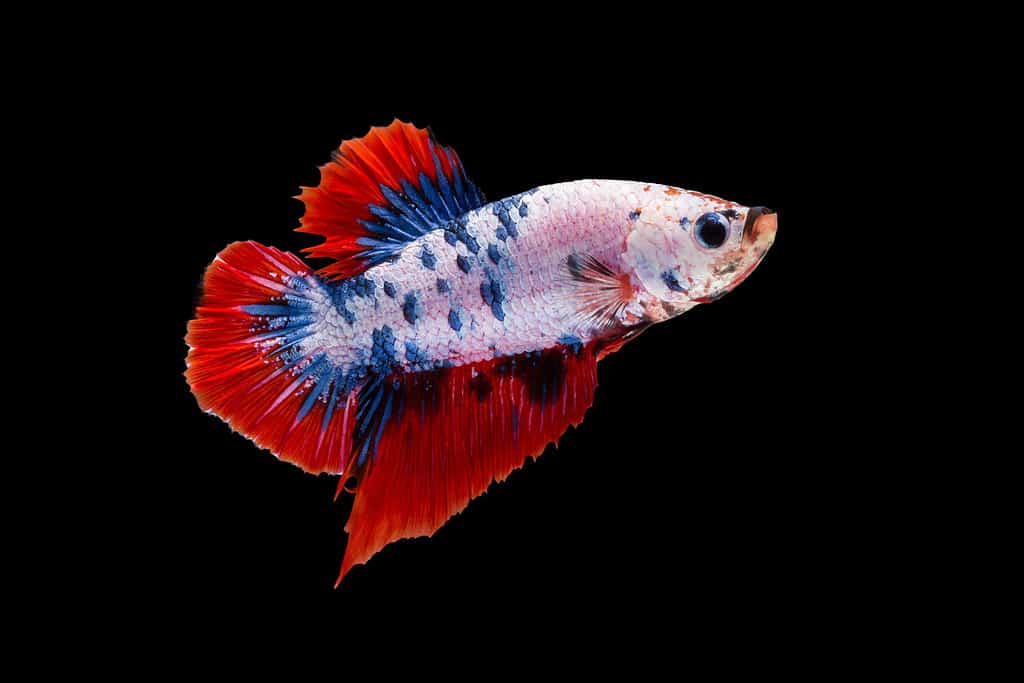
Male bettas, including marbled ones, are usually larger and more ornate than females.
©pritsana/Shutterstock.com
15. Metallic
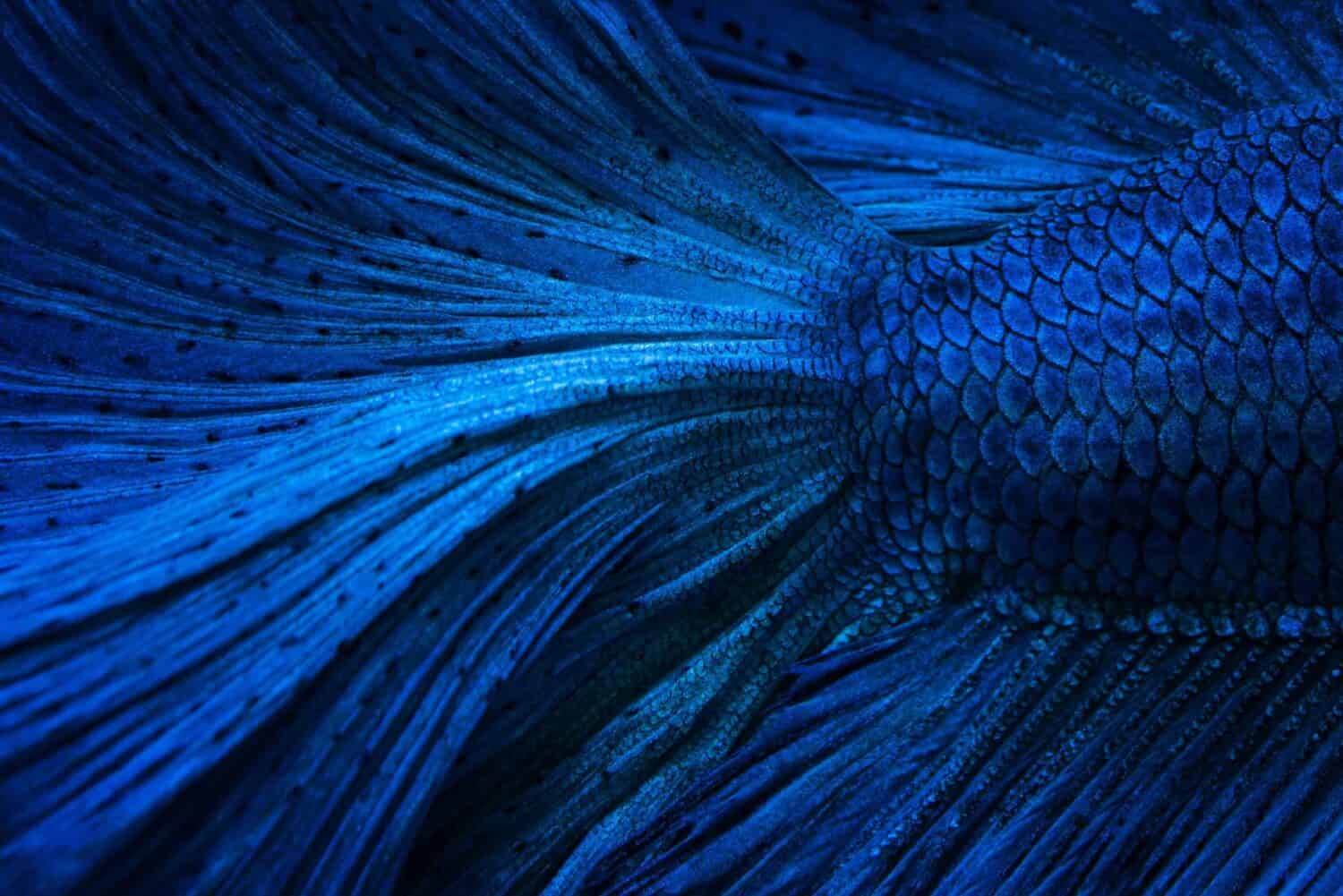
Masked bettas have a metallic body color on their head and faces.
©Baimieng/Shutterstock.com
16. Purple
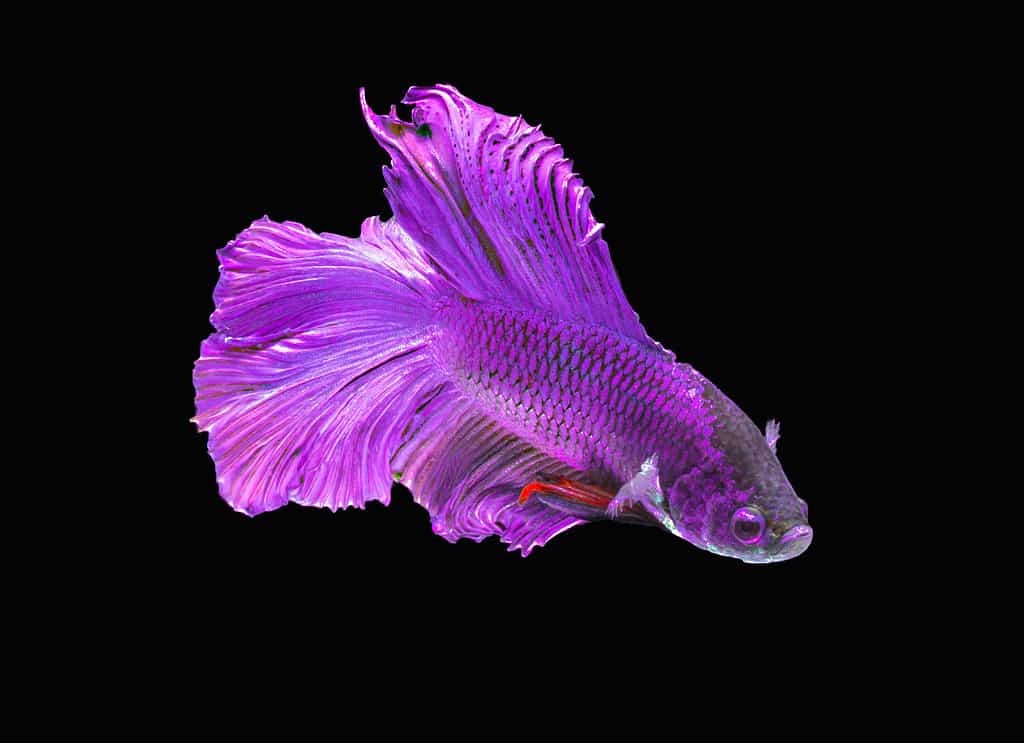
It’s difficult to breed a perfect purple, making the purple betta fish one of the rarest yet.
©GracePhotos/Shutterstock.com
17. Rose Gold
Rose gold betta fish have a coloration that may deepen as they age. They’re lovely to watch as they swim around the tank, waving their elegant fins.
18. White Green
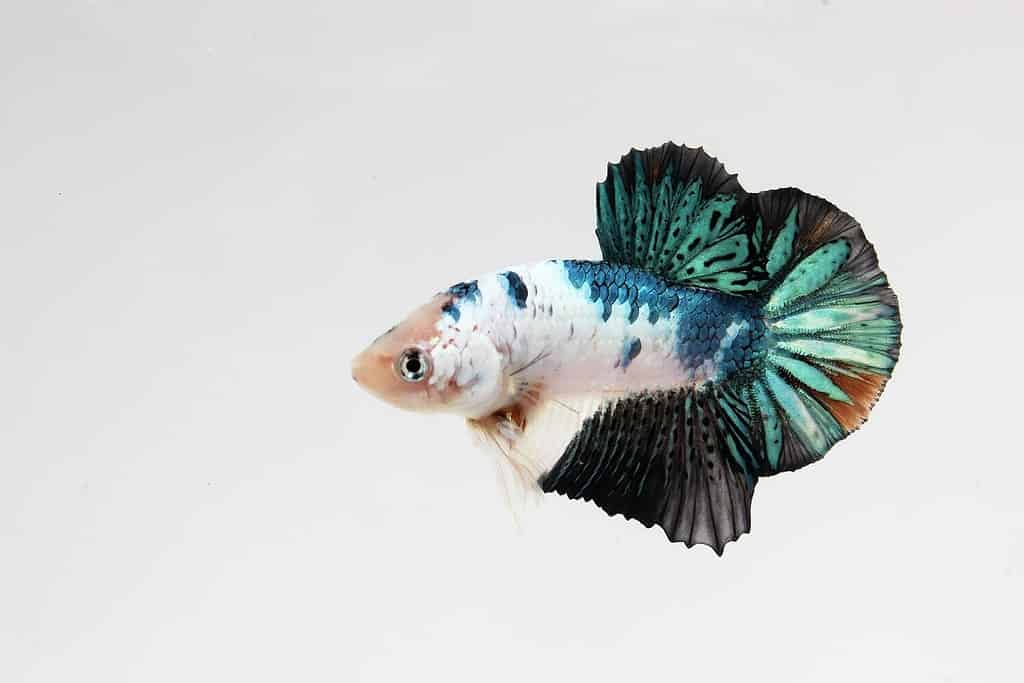
White-green bettas combine the precious green varieties with the stark white ones.
©Benzstock/Shutterstock.com
19. Translucent/Clear
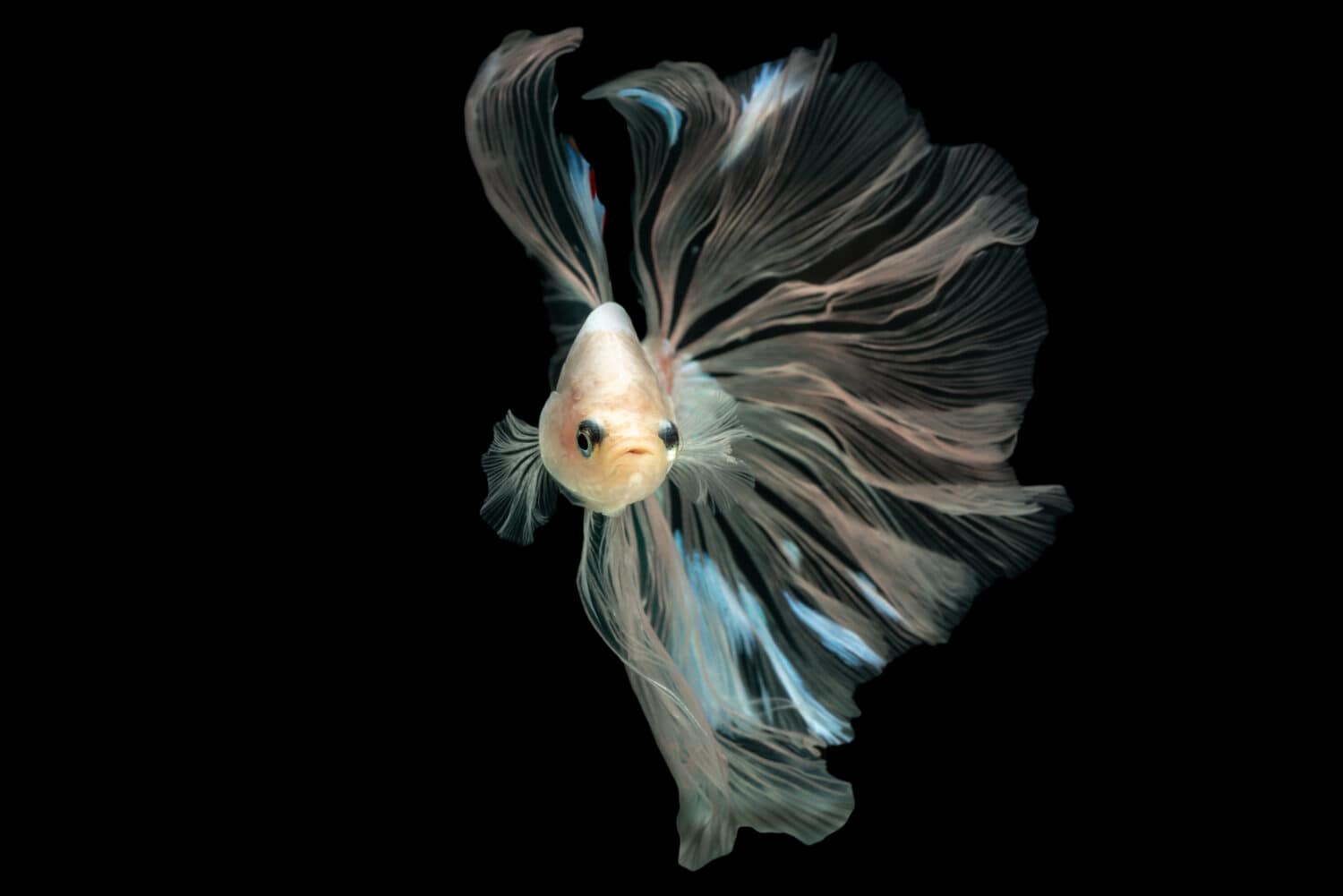
Cellophane bettas don’t have any color and their fins are completely clear.
©3623/Shutterstock.com
20. Albino
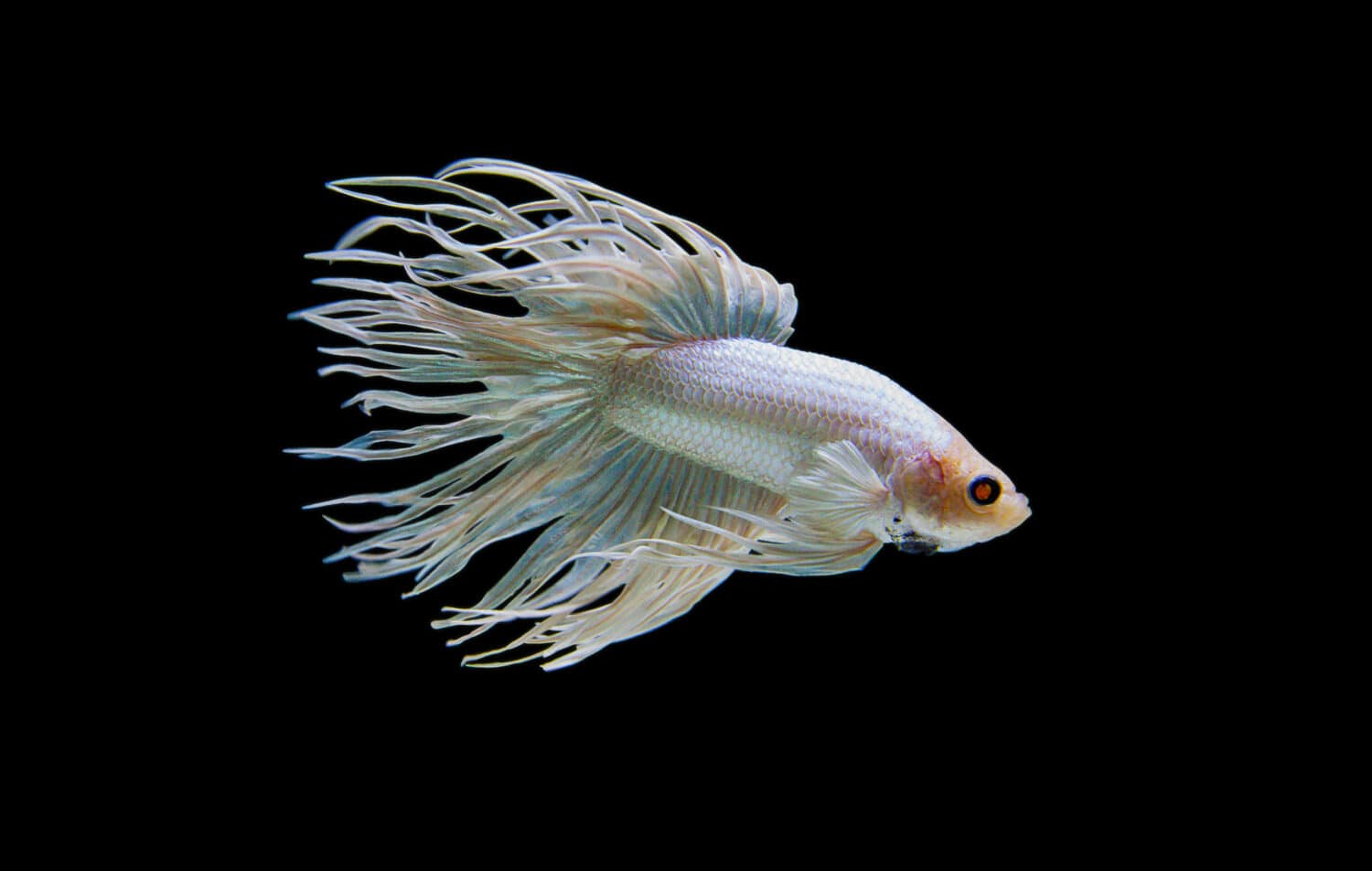
While it’s rare, it is possible for an albino betta fish to exist.
©Do Thanh Binh/Shutterstock.com
Genetics of Betta Fish Colors

Betta fish have a genome with 451 million base pairs, giving them an extensive genetic code.
©Digital Art StudioTH/Shutterstock.com
What happens when you breed royal blue bettas? They produce lovely turquoise, steel blue, and royal blue colors.
Fighting ability, colors, body size, fin types, and patterns are some of the top traits breeders consider. There are thousands of different gene combinations to determine their color variations. New information is coming to light every day, even though people have been breeding bettas for at least 600 years.
A lot that goes into understanding this fish’s genes. One of the things that makes the genetics of betta fish colors complex has to do with their large number of base pairs. Betta fish have a genome with 451 million base pairs, giving them an extensive genetic code. As a result, creating new types of bettas and achieving true colors is a complex process. It also means that bettas are the ideal specimen for all sorts of genetic studies.
Four Skin Layers
Betta fish have four skin color layers. The top iridescent layer, which is often blue or green, is most dense in the top layer. Next, there’s the black layer (which tends to be covered up by colors). In the wild, the black color is considered the base color. When there’s black pigmentation under the iridescent layer it can make colors appear darker and richer. Finally, there’s the yellow layer and the red layer. The yellow is the least dense in the bottom layer in wild bettas.
Each layer has genes controlling the colors, known as phenotypes, with specific genes. For instance, influencing black pigmentation there are genes like Cambodian, blonde/bright (bb), and melanoma (mm). While, the red layer is controlled by genes like R, causing full-body red. The yellow layer’s genetics aren’t as well understood, but it’s possible they tie into the opaque gene.
Along with influencing the traditional skin color layers, the genes also influence patterning. Have you ever marbled at a beautifully mosaic-patterned betta? This polygenic trait causes the bettas to have multiple genes on different chromosomes.
Athletic Genetics
Betta fish aren’t just colorful, they’re athletic too. These fish are excellent jumpers. With the ability to jump 3 inches, they sometimes jump out of their tanks! Along with being able to jump, bettas are also highly skilled breathers.
Skilled Breather
A special organ, the labyrinth organ, enables them to breathe both air and water for oxygen intake. It’s normal for bettas to rise to the surface every few minutes to take a breath. Sometimes they rise more frequently, other times they rise less. It all depends on their health and environment.
Care and Breeding of Betta Fish
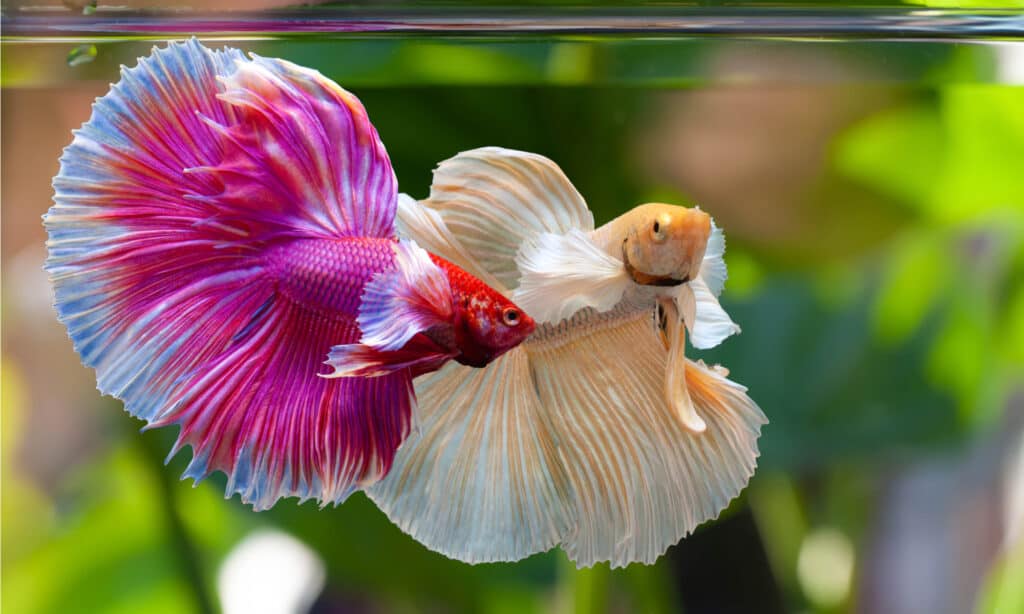
With proper care, bettas have an average lifespan of 3 to 5 years.
©panpilai paipa/Shutterstock.com
Bettas can live up to a decade, but the typical lifespan is around 3 to 5 years. To create a happy home for them, you have to set up the right type of tank environment, including finding fish they can get along with. When considering tankmates for your bettas, avoid species that have a tendency to nip or bite. Fish with subdued colors usually work best. And it also helps if you provide plenty of space.
Keep in mind that bettas come from small, shallow streams in Thailand. Make it your goal to replicate their natural environment in your aquarium. You’ll also want to space things out the right way. As labyrinth fish, they can breathe oxygen from the water’s surface. Leave some space at the top of the tank to allow them easy access to air.
What will your fish want to eat? All sorts of things, and it’s up to you to keep their diet interesting. These carnivorous fish need a protein-rich diet.
Finally, be alert for signs of illness, which include loss of appetite, lethargy, fin and tail deterioration, abnormal swimming, dull colors, and strange growths or marks. The sooner you notice there’s a problem, the easier it’ll be to treat it. Most betta fish diseases can be treated with medication and adjustments to tank maintenance.
Betta Fish Colors and Patterning
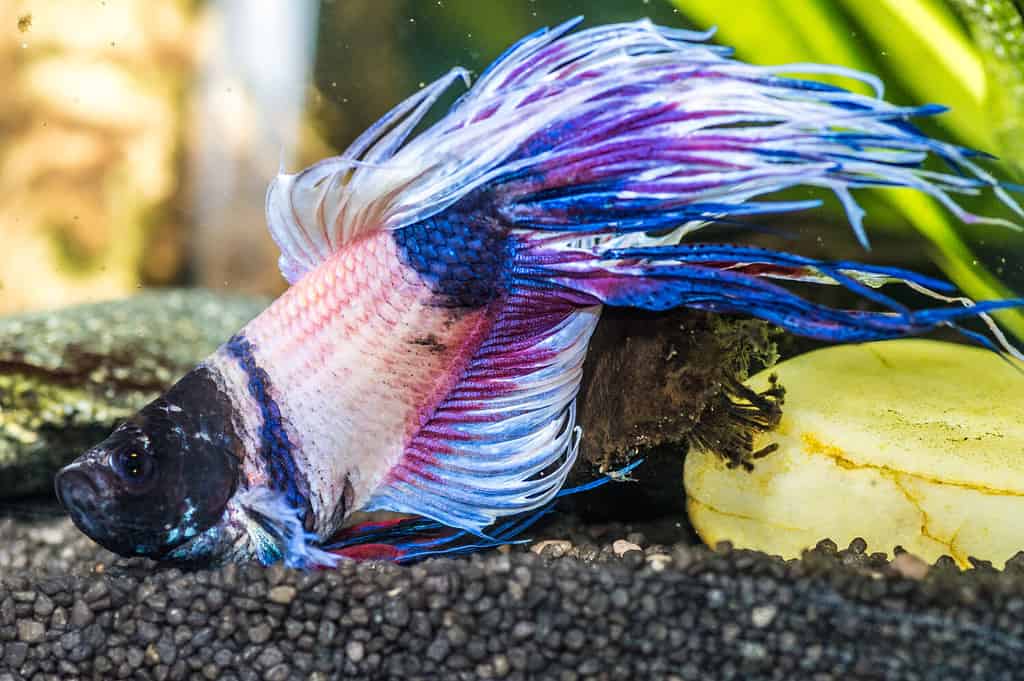
Unique betta fish patterns include multi-colored, full mask,
butterfly
, dalmatian, and more.
©Wirestock Creators/Shutterstock.com
Along with sporting all sorts of different colors, bettas also have various patterns. Here are some of the most eye-catching betta fish patterns you should know about:
- Grizzle
- Wild-type
- Solid
- Multicolored
- Cambodian
- Marble
- Dalmatian
- Dragon scale
- Butterfly
- Macrostoma
- Piebald
- Full mask
- Bi-color
Yellow, orange, steel, copper, and blue; there are numerous color variations for grizzled bettas. Grizzle bettas have a single base color that isn’t black or red. These fish also present two colors, with a soft color on the body and fins.
Do Betta Fish Change Colors?
Wondering why your betta fish is changing colors? It’s a common question, and there are several possible reasons for it. One of the main causes of color changes is stress. You might also see “stress stripes” running horizontally along their bodies. This stress often results from poor water conditions, like temperature fluctuations. To maintain a healthy betta environment, be sure to perform regular maintenance tasks such as rinsing filter media in old tank water and changing the filter media according to the manufacturer’s recommendations.
Another factor to consider is age. Just like humans, betta fish can experience changes in color as they grow older. Some individuals may lose vibrancy in their colors as they age, and if it’s due to natural aging, the color loss may be permanent. Additionally, betta fish can change color as they reach sexual maturity. This means their colors may either darken or become brighter during this phase.
Improving Betta Fish Color
If you recently purchased a betta online or at a pet store and their colors aren’t as striking as you expected, don’t worry. Bettas from pet stores or online sources may have experienced stress in low-quality conditions. However, when you place them in a well-maintained home aquarium with suitable decorations and companions, their colors may become more vibrant. You can also enhance their colors by providing them with the right foods. A diet rich in high-protein foods like brine shrimp, bloodworms, daphnia, and krill can help bring out their natural colors.
Lastly, some betta fish are genetically marble, which means they have a unique trait known as the “jumping gene.” These marbled bettas can undergo spontaneous and unpredictable color changes throughout their lives. They may start with a plain, cellophane body with random pigments and develop different colors later on. So, if you have a betta that seems to change colors frequently, it might be a marble betta with this fascinating genetic quirk.
Summary of the 20 Rarest Betta Fish Colors
| Unique and Rare Betta Fish Colors |
|---|
| Red, White, and Blue Stripes |
| Teal and Dark Blue |
| Copper Pink Halfmoon |
| All White |
| Koi |
| Chocolate and White |
| Gold |
| Black |
| Light Green |
| Rose Petal |
| Pineapple |
| Yellow |
| Marble |
| Metallic |
| Purple |
| Rose Gold |
| Orange Dalmatian |
| Translucent/Clear |
| Albino |
Thank you for reading! Have some feedback for us? Contact the AZ Animals editorial team.

